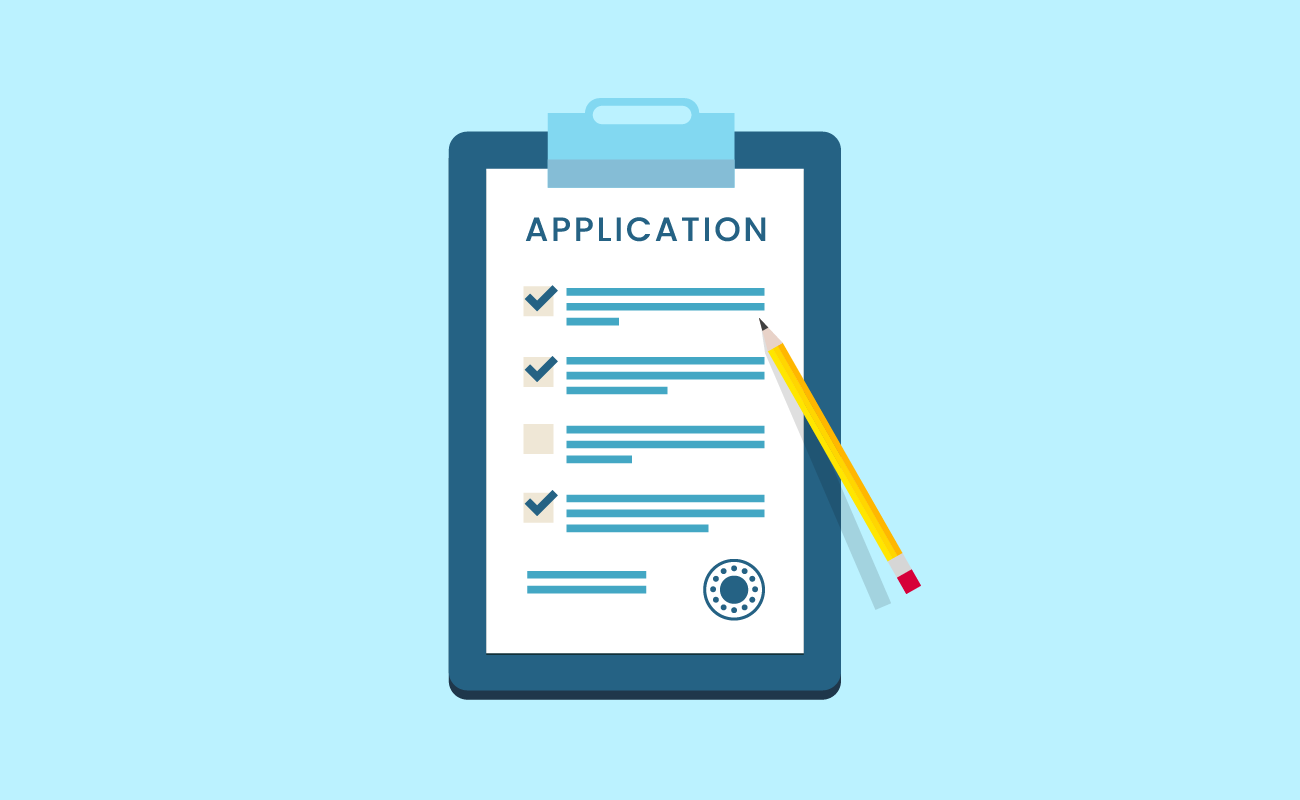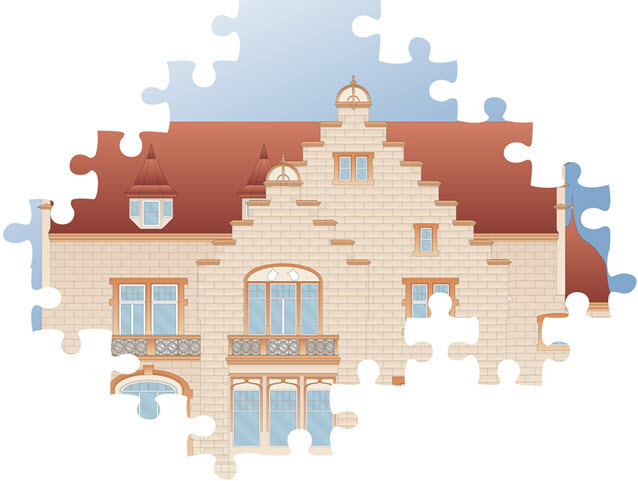
Thinking of buying a new home? Having trouble with all of the mortgage terminology? As a borrower, you may be left with many questions.
In order to make an educated decision about something as important as a mortgage, it's easier to first get comfortable with the process. Read on for more helpful information from mortgage rates to buying versus renting and everything else in between.

Completing a mortgage application can be an intimidating task, especially if the borrower is uncertain of what information will be needed. Here are some key factors that lenders consider during the application process:

Credit Report
As a borrower, it is important to obtain credit reports from each of the three major credit bureaus, and examine them carefully. Incorrect information can cause higher rates, or keep the borrower from getting a mortgage altogether. It's estimated that over forty percent of all credit reports contain errors. Any discrepancies need to be corrected as quickly as possible.
Credit Standing
Carry low credit card balances, or pay them off, along with any other outstanding bills before applying for the mortgage.
Credit Accounts
The amount of a borrower's credit accounts can make a difference when applying for a mortgage. Avoid closing current accounts or applying for new ones, as this can make the lender suspicious.
Down Payment
The more money a borrower can afford to pay up front, the more likely they are to be approved. It also makes for a lower loan. Of course, borrowers with an excellent credit history are likely to be approved regardless of how much money they can afford to put down. For those with less than perfect credit, the amount of a down payment could make the difference between approval and rejection.
Income
Lenders look for steady sources of income, so avoid changing jobs or quitting right before submitting a mortgage application.
Interest Rates
Loans are not approved or denied based on interest rates, but they do help to determine monthly payments. Interest rates can also change while the loan application is being reviewed and processed by the lender. Therefore, if the borrower thinks the interest rates could rise, they may consider paying a "lock-in" fee in order to guarantee a favorable rate.
Available Funds
Along with a good down payment, borrowers should funds set aside to cover closing costs, and (if necessary) pay for points. Avoid major purchases that may deplete any available funds prior to purchasing a new home. Lenders also like to see 3 to 6 months worth of mortgage reserves set aside to cover your monthly payments in case of illness or job loss.
Price Ranges
In order for a borrower to get an idea of how much they can afford monthly, it is important to figure out their debt-to-income ratio. Lenders are unlikely to approve the mortgage for a house the borrower cannot afford.
The Lender
Diligence is an asset, and every lending institution is different. Learn the reputation and history of the lender, and find out how many mortgage applications they approve, as well as how many they deny. If the lender denies twenty percent of borrowers who apply, it's not a good sign.

Are You Confused By Mortgage Industry Jargon?
Do you need to know what various mortgage terms mean? We also offer a complete mortgage glossary.
The following table provides current market information from lenders. It allows you to adjust your loan amount, down payment amount, FICO score and other variables to show you current local rate information.
To determine how much can be borrowed for a mortgage, the lender uses compares the borrower's income to their housing expense and their total monthly debt service obligations. These debt-to-income ratios are called the front end ratio and the back end ratio. It is important to know the criteria used to determine the loan amount, and equally important as a borrower to have an idea as to how high of a mortgage can be comfortably taken on.
1
Front-End Ratio: The monthly percentage of your yearly gross income dedicated to mortgage payments is called the front-end ratio. Mortgage payments consist of four basic components: taxes, interest, insurance, and principal. Often, they are collectively known as PITI, and should not exceed 28% of your gross income. This is a general rule of thumb, although some lenders have been known to lend to borrowers with PITI exceeding as high as 30 to 40%
2
Back-End Ratio: The percentage of a borrower's gross income required to cover their debts is called the back-end ratio. It is also known as the debt-to-income ratio. Debts include car payments, child support, credit card payments, mortgages, and other loan payments. Most lending institutions will recommend that the borrower's debt-to-income ratio should not exceed 36% of their gross income. Based on this ratio, the maximum monthly debt can be calculated by multiplying one's gross income by 0.36 and then dividing by 12. It may be difficult to stay within a 36% guideline in regions where the home prices are higher, although some lenders will allow a debt-to-income as high as 45%. Additionally, there are some mortgage programs, such as Veterans Administration mortgages and Federal Housing Authority mortgages that allow a ratio to exceed 36%. Bear in mind that a higher ratio could raise the interest rate, so it may be better to go with a less expensive house. It is also in the borrowers best interest to pay off as much debt as possible before even shopping for a mortgage, as it can help them achieve a lower debt-to-income ratio.
3
Down Payment Percentage: Many lending institutions will let a buyer purchase the home with a significantly smaller down payment, but paying at least 20% of the home's purchase price up front will minimize the insurance required. Buyers who can make a larger down payment are able to purchase more expensive houses, and 20% or more can help buyers avoid mortgage insurance altogether. The mortgage payment is directly impacted by the down payment, and also by both back-end and front-end ratios.
DTI limits vary by loan type.
| Loan Type | Front End Limit | Back End Limit |
|---|---|---|
| Conventional | N/A | 50% |
| FHA | many lenders require 31% or below; can't get approved via Automated Underwriting System if above 46.9% | 43% with FICO below 620; borrowers with FICO above 620 can exceed 50% up to 56.9% with compensating factors; many lenders may have tighter standards |
| VA | N/A | lender benchmark of 41%; varries by lender |
| USDA | 29% to 32%, higher with compensating factors | 41%, or 44% with a PITI below 32% |
On June 22, 2020 the CFPB announced they were taking steps to address GSE patches which could see the DTI ratio removed as a requirement for qualifying mortgages. They would instead rely on loan pricing information as the basis for qualification.
“The Bureau proposes to amend the General QM definition in Regulation Z to replace the DTI limit with a price-based approach. The Bureau is proposing a price-based approach because it preliminarily concludes that a loan’s price, as measured by comparing a loan’s annual percentage rate to the average prime offer rate for a comparable transaction, is a strong indicator and more holistic and flexible measure of a consumer’s ability to repay than DTI alone.
For eligibility for QM status under the General QM definition, the Bureau is proposing a price threshold for most loans as well as higher price thresholds for smaller loans, which is particularly important for manufactured housing and for minority consumers. The NPRM also proposes that lenders take into account a consumer’s income, debt, and DTI ratio or residual income and verify the consumer’s income and debts.”

Choosing the right mortgage type is key in the home-buying process.
A fixed rate mortgage is a loan in which the interest rate on the note will remain the same throughout the entire term, as opposed to mortgages in which the interest rate may adjust or "float". Generally, fixed rate mortgages come in 10, 15, or 30 year terms, and are the most popular mortgage type. Over 90% of United States home mortgages are FRM's.
An ARM, or adjustable rate mortgage is just that. After the initial "fixed" period, the rate will change and adjust on a specified schedule. Considered riskier than the fixed rate mortgage, an ARM payment can fluctuate significantly. The reward for taking such a risk is an initial rate below the 30-year fixed rate. A one-year ARM is a thirty year loan in which your monthly payment, and the rate itself, changes on the loan anniversary date each year.

Unsure Which Mortgage Best Fits Your Budget?
Compare fixed, adjustable & interest-only mortgages side by side.
The Federal Reserve has hinted they are likely to taper their bond buying program later this year. Lock in today's low rates and save on your loan.
Are you paying too much for your mortgage?
Check your refinance options with a trusted lender.
Answer a few questions below and connect with a lender who can help you refinance and save today!